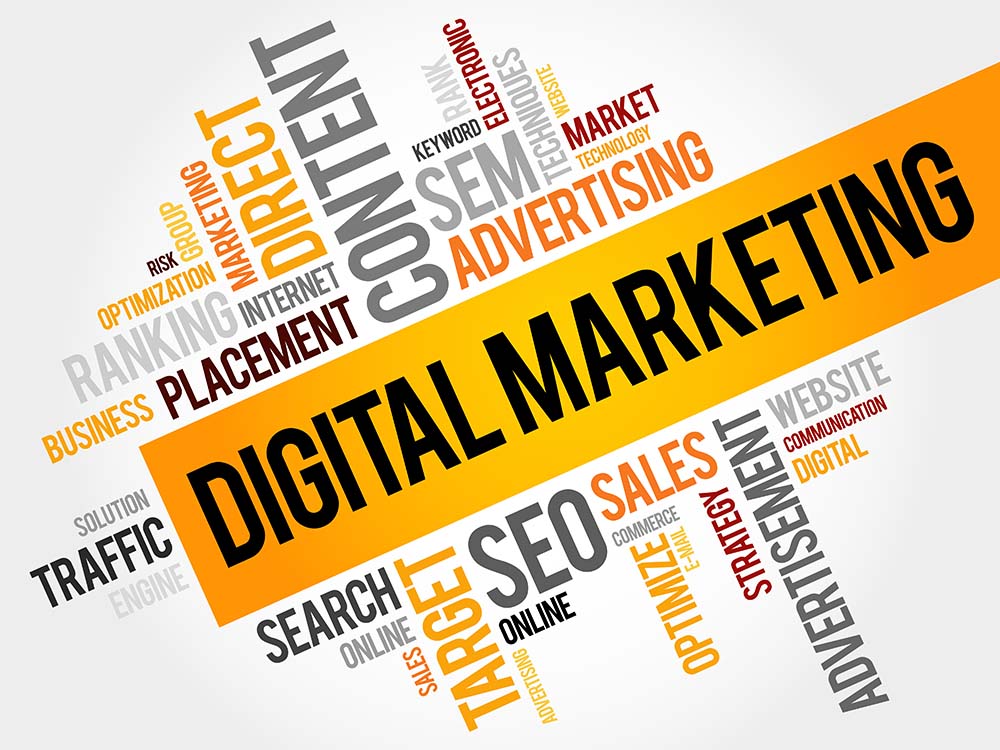Understanding Agency Language|The Low Down on Marketing Lingo

Ever left a meeting with your agency wondering what in the world those acronyms meant, or how to interpret the foreign language that is your analytics report? We know the feeling; we all had to start somewhere! Once you begin to understand the marketing terms and lingo used by your agency, it becomes so much easier to understand how well your campaigns are performing; as well as how to optimize your website, social media content and paid campaigns for greater levels of overall success. Don’t bother cracking open your copy of Marketing-Webster, we’ve got your back!
CTA or Call to Action
This is simply a word or phrase used in marketing that describes methods that result in the audience taking action! Calls to action can be found in many forms: a “Contact Us” or “Learn More” button, a form fill, newsletter subscriptions, or even phone calls. When your agency encourages the use of CTA in a social media post, they’re pushing for language that encourages the viewer to take action and a button or link that allows for it.
CTR or Click Thru Rate
Click thru rate is the percentage of times that a user clicks on an ad if they are exposed to it. For example, if the average user is shown an ad by your company 500 times, but they only click on it 200 times, the click thru rate (200/500) is 40%.
Conversion Rate
Similar in nature to CTR, the conversion rate is the percentage of people who respond to your call to action on website or social media ads. It would be easy to assume that the conversation rate is only identified by the amount of non-customers that are transitioned into customers. Additionally, converting a website visitor into a qualified lead also factors into your conversion rate. For example, let’s say that you have an Instagram ad running for the promotion of a 5k that your company is sponsoring. (Extra points if you plan on running in it; we’re cool to snap some content from the sidelines!) 15,000 people see your ad but 2,500 signed up for the 5k. Your ad had a conversion rate of approximately 17%.
Organic Traffic
Organic traffic the traffic that is brought on by users visiting your website without paid efforts on your end. Users that visit your website or profiles unprompted or without influence from paid campaigns are organic. As an agency, we are always looking to increase this metric for our clients!
Sales Funnel
The sales funnel is the process that allows for you, as a manager or business owner, to keep track of where your potential clients and customers are in the buying journey from discovering a need, identifying possible solutions and offerings to soothe the need, performing research, and making final purchases that meet the need. Most often, we use this phrase in terms of moving your potential customers further through the sales funnel: we want that person identifying their need for a product or service to identify YOU!
Bounce Rate
We don’t want your viewers bouncin’ around! Bounce rate is a term used to describe the percentage of viewers who leave your website after only viewing one page, rather than clicking on links or moving to other pages within your site. Bounce rate percentages are an effective indicator of how interesting your page is to users; this insight helps you and your agency better understand what is capturing the attention of users and how to optimize what isn’t!
Landing Page
Simply put, a landing page is a singular web page with a specific purpose that almost always involves encouraging a user to take action. Let’s say that you’re looking to further educate your clients on how to use your product/service, so you run a Facebook ad with a link to a FAQ page on your website. The click thru link on your Facebook ad should lead to the web page featuring the FAQ, serving as your landing page for the ad.
Lead Nurturing
In some form, we’ve all heard of lead generation. Lead nurturing is the process of pushing your leads further through the buyer’s journey until, well, they are ready to buy! This is done through providing your leads with additional information about your brand as a whole, your product or your service. To jump over the hurdles that stand in the middle of consumers discovering your company and becoming patrons, begin to develop a relationship with your leads through continuing to supply them with information about who you are, what you do, and how your product or service can benefit them.
Gated Content
Gated content is high-quality content owned by your company or business that is hidden behind a form or some sort of call to action, such as subscribing to a newsletter. Website visitors that gain access to your company’s gated content are visitors that submitted contact information via a form or subscribed to your newsletter, fueling your company’s list of generated leads.
Customer Relationship Management or CRM
Along with many of these terms and phrases, this one is commonly used by our team here at KSM. CRM systems manage a company’s communication (direct or indirect) with potential and existing customers through the use of software to organize, automate, centralize, and integrate a company’s sales calls and emails. As an owner, general manager, or social media director, the implementation of a CRM system in your business is vital to the clean and simple organization of your interactions with varying levels of customers!
SEO or Search Engine Optimization
Search engine optimization is done by optimizing the content of a web page(s) to increase its relevance to certain keywords. This is done through incorporating relevant keywords throughout a page, including good copy, and backlinks in efforts to drive traffic to your site and increase the visibility of the site organically (without funding). For example, if you own a Chevy dealership and are looking to increase traffic to your site organically, you would want to include keywords relevant to your offerings and what your customers are looking for, such as “2021 Chevrolet Tahoe” or “2021 Silverado Features.”
CPC or Cost per Click
Gosh, enough with the acronyms, right?! This is the amount that you would spend on a singular conversion from an ad. If Sally and Johnny click on your ad, you’ve just incurred the costs of their click! To illustrate, if you spend $500 in internet advertising for a single campaign that results in 175 leads, your cost per click ($500/175) is $2.86.
CPI
Similar in nature to cost per click, just in terms of social media advertising, is cost per impression! This is the amount you would pay for x amount of impressions on your social media ad.
Impressions
Impressions are a statistic that illustrate how many times your ad is seen. The user clicking on interacting on your ad in any way does not factor into your impressions, which lends us to the next term…
Engagement Rate
We know you’ve likely heard this before, but what does it mean? This is one of the most commonly-used terms in social media marketing and is a clear indicator of user interest in your business’s content! Your engagement is the number of comments, shares, and likes that your content receives as it serves as user interaction with your content. In other words, the viewing of your post (an impression, as you now know!) from a user does not contribute to your engagement rate unless the content is interacted with.
And now maybe you can effectively absorb all this great inside data on how your customers engage with your company! Trust us, agencies live and die by this inside data – just be sure your agency is putting it into actionable items that result in stronger customer relations!
And you’re off and on your way to blowing your marketing team away!

 All Posts
All Posts 

